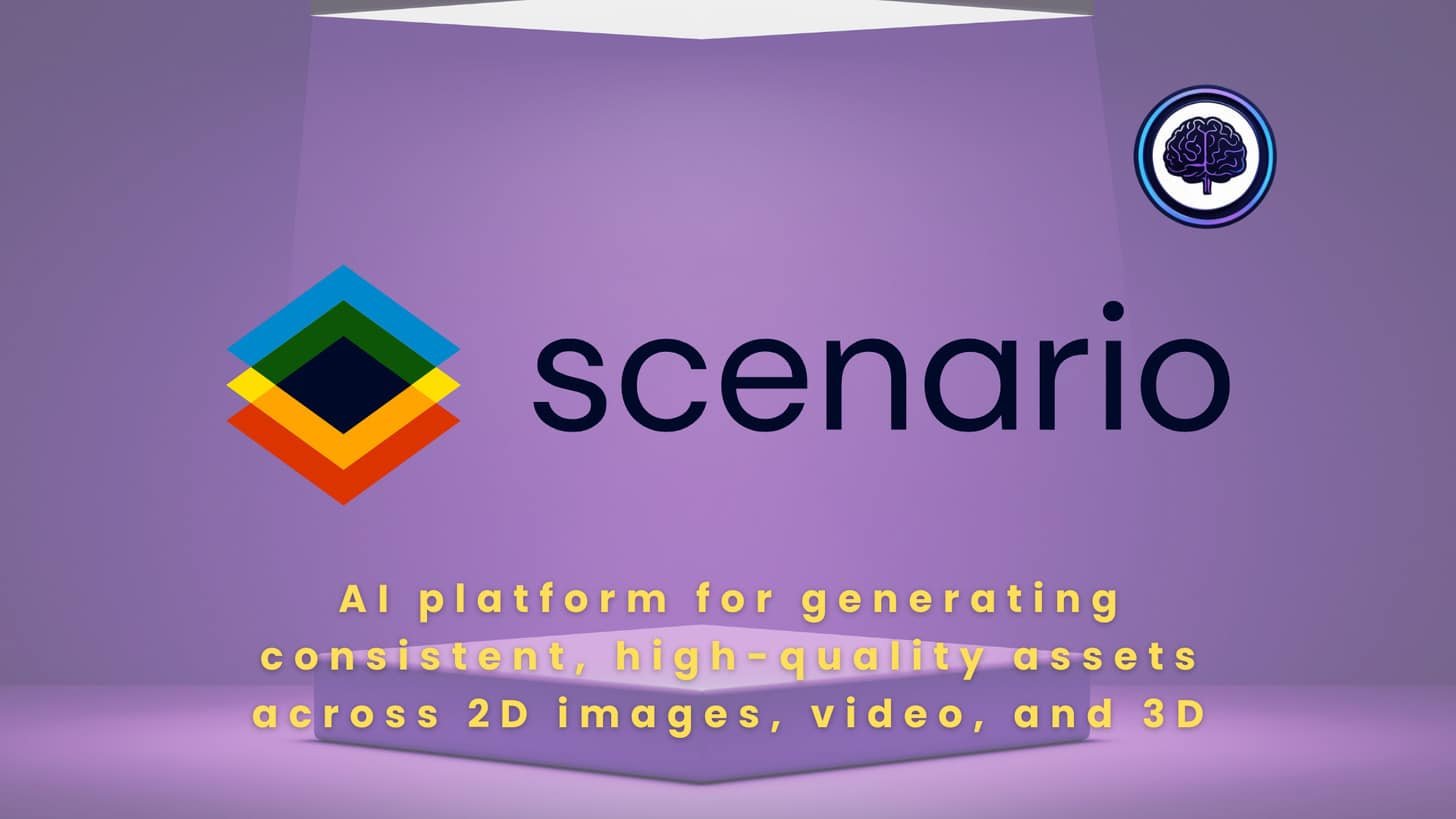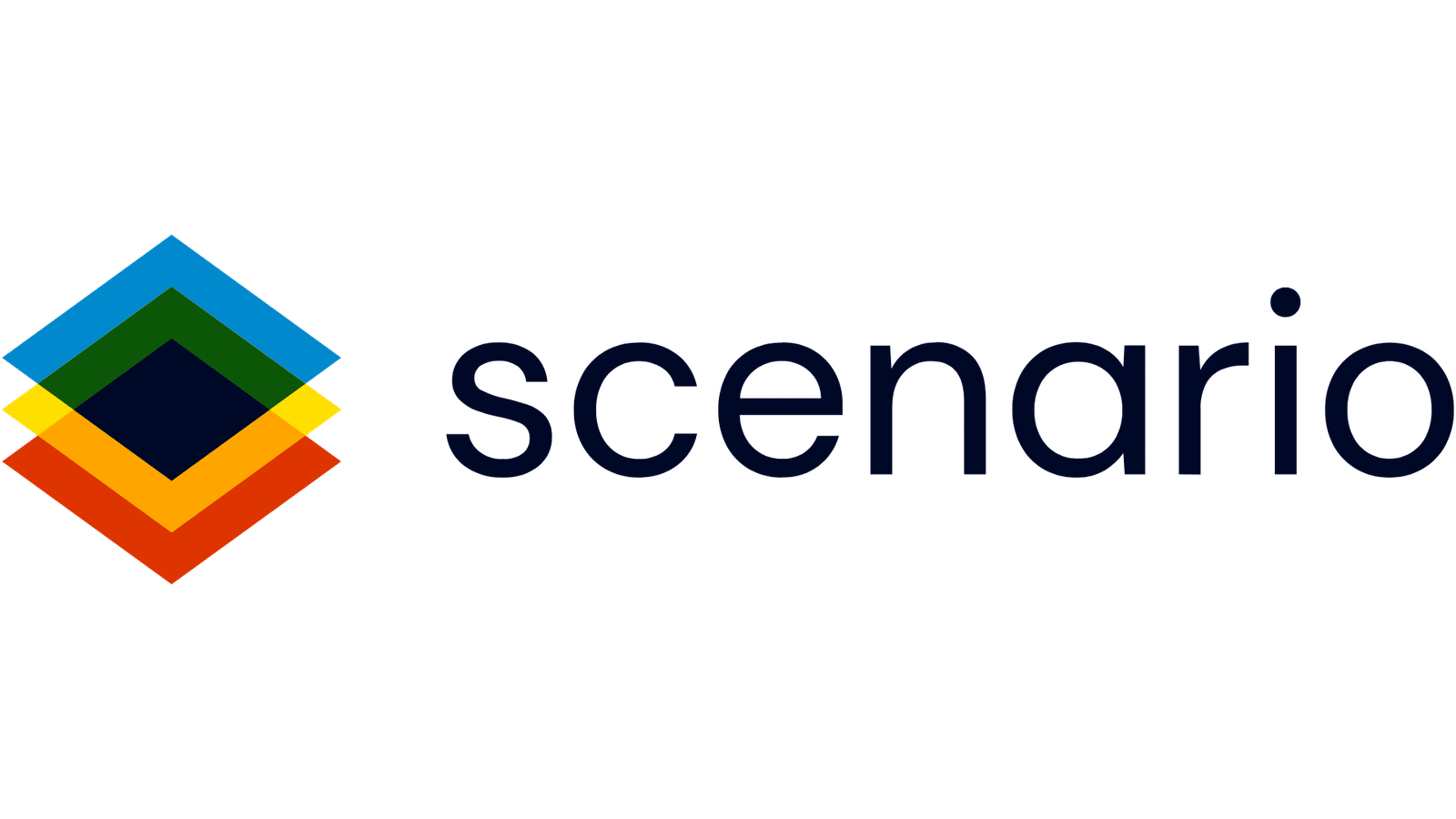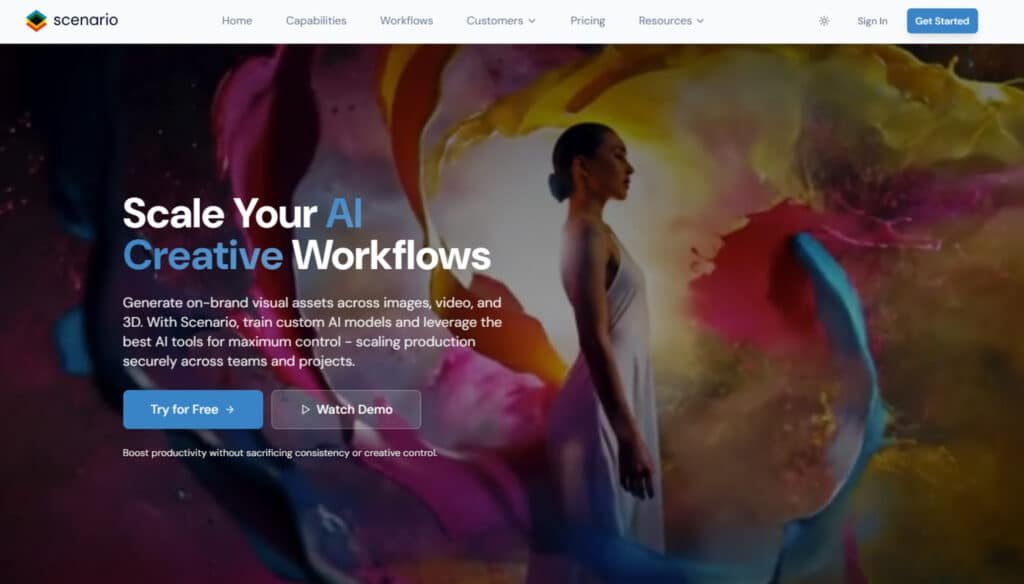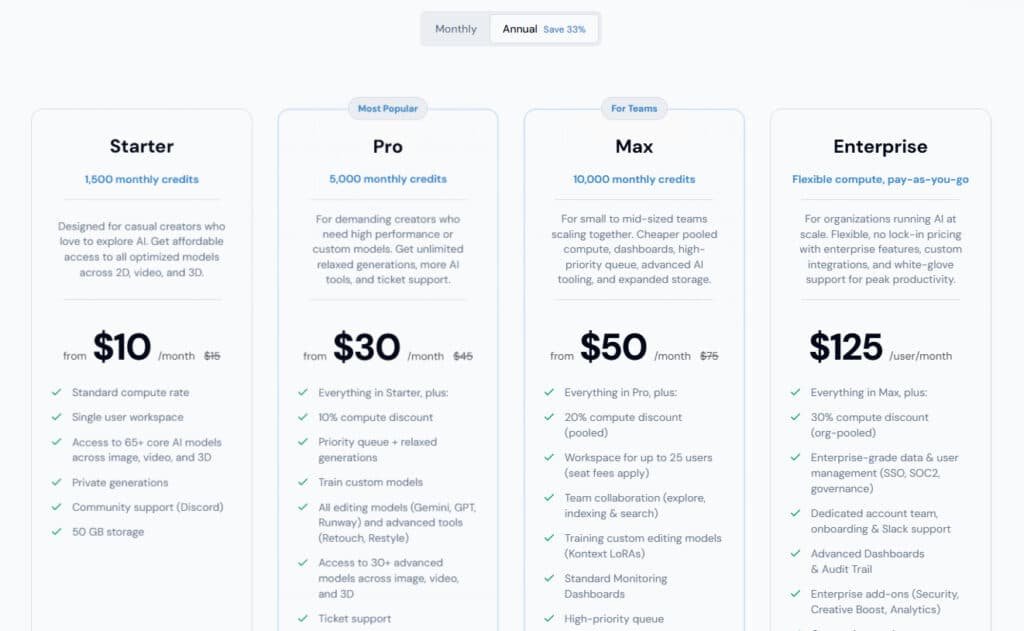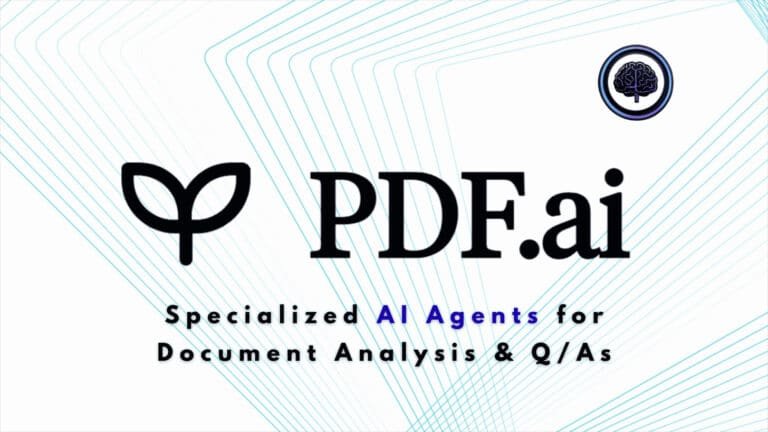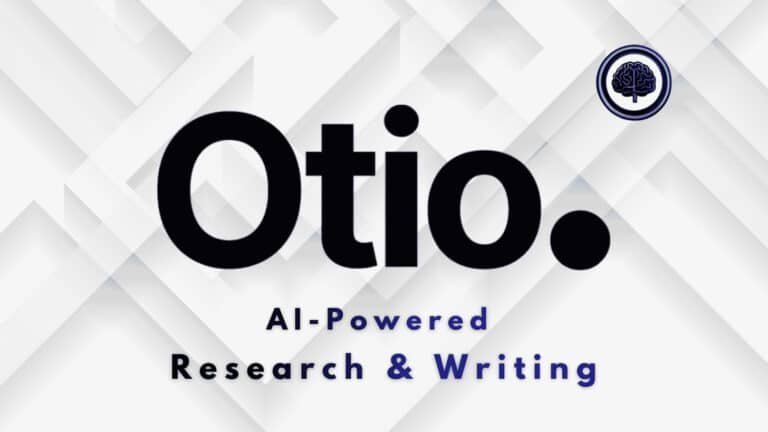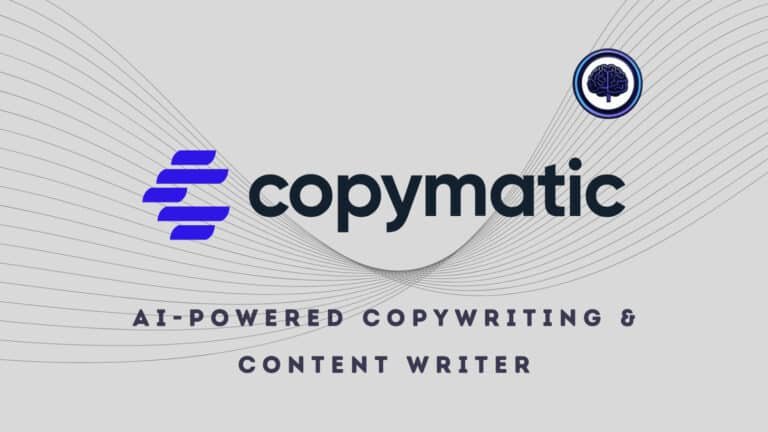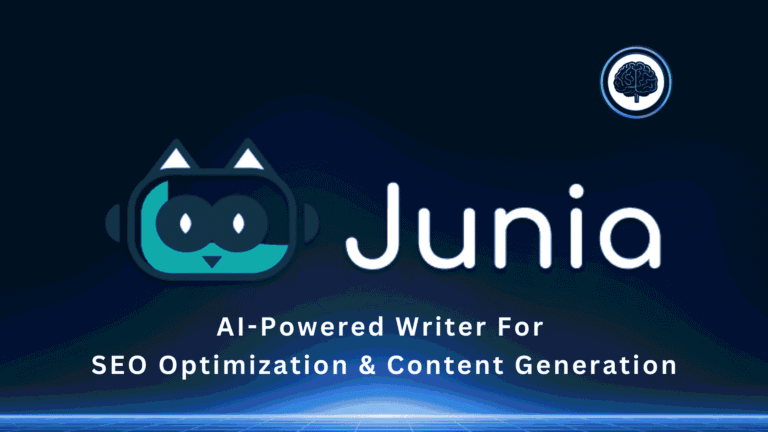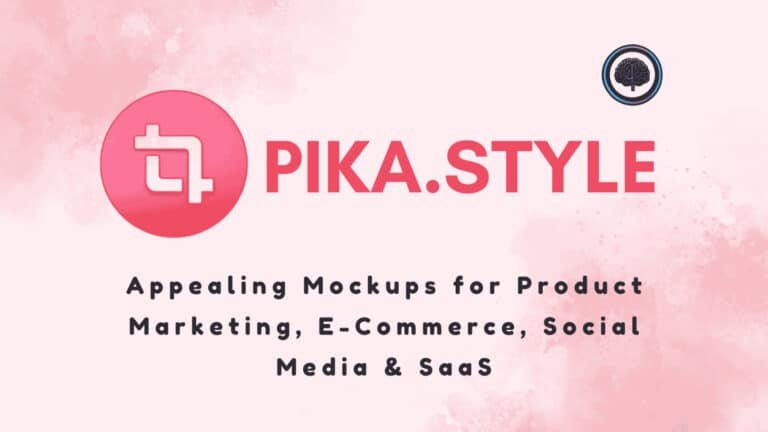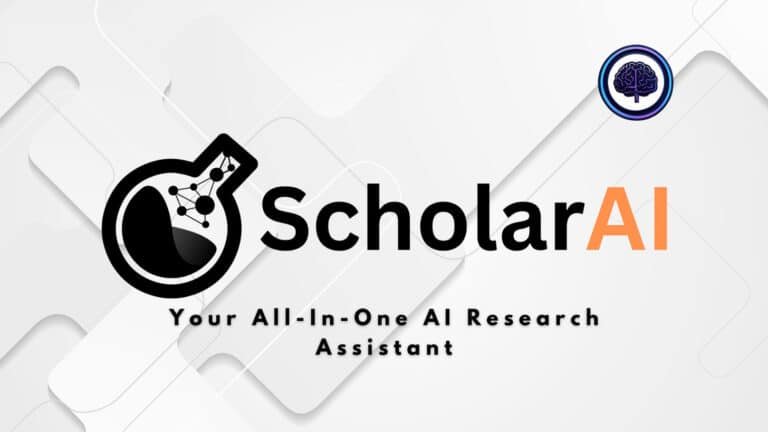You need consistent, playable game assets fast, but your pipeline is slow, style drift is constant, and prototyping eats time and budget.
I’ve felt that frustration — endless edits, mismatched tiles, and stalled sprints while you wait for usable images or a single polished character. That lost time kills momentum and raises costs for developers and small studios.
This Scenario AI Review walks you through one practical tool built to speed asset generation and keep style cohesion. I’ll show how the platform trains custom models, its composition control, pixel-perfect inpainting, Canvas workflow, and the Enhance upscaler so you can judge quality and time savings for your game projects.
I’ll cover pricing tiers, pros and cons, and comparisons to other toolchains so you know who should adopt this — and who should wait. If you want a clear picture of how this scenario fits your pipeline and when it saves real hours, let’s dive in.
Key Takeaways: Scenario AI Review
- This review explains what the tool does and who benefits (solo devs to studios).
- I test core features: composition control, inpainting, Canvas, and upscaler.
- Expect a breakdown of pricing, quality, and time-to-playable assets.
- Comparisons include Midjourney, Stable Diffusion toolchains, and Photoshop workflows.
- The verdict gives a practical recommendation for adoption or waiting.
Scenario AI Review: An Overview
Raamish’s Take
Scenario AI powers creative workflows with a robust AI toolkit, letting teams generate on-brand visuals—images, videos, and 3D assets—while training custom models for precision.
It unifies tools to ship production-ready content faster, trusted by industries like gaming and marketing.
Standout strengths include custom model training for consistent styles, video creation with cinematic flair, and 3D mesh generation from text. Edit features like retouch and upscale polish outputs, while analytics track usage and collaboration tools organize assets across projects.
Struggling to scale creative work? Scenario AI platform delivers control and speed, backed by a seamless workflow.
Introduction to Scenario AI
Let’s map where this platform sits in modern game development and why teams are paying attention. I’ve used it for quick concept runs and bigger prototype pushes, and what stands out is focus: this is purpose-built for game creators, not general image play. That focus translates into faster, more consistent outputs for art-led projects.
Where this product fits in today’s AI landscape
It narrows the AI boom down to game asset workflows. Instead of juggling generic tools, you get custom models trained to match a project’s style. That means fewer handoffs, cleaner iterations, and quicker tests inside engines like Unity and Unreal via a web app and API.
Who’s behind it and who uses it
The team behind the platform draws industry backing and endorsements tied to names at Riot, Blizzard, and Oculus — a signal that studio expectations shaped the roadmap. Typical users include artists, designers, producers, technical artists, and even tabletop creators.
- Why decision-makers care: predictable throughput and engine integration cut risk in production schedules.
- Why artists care: style-cohesive outputs and a library of fantasy, anime, isometric, and chibi assets speed ideation.
What is Scenario AI?
Let me explain what the product does, and why it matters for making playable game art fast. At its core this is a diffusion-based image generation platform tuned for game production. It offers custom model training so your art stays on-brand across sprites, props, and UI.
Under the Hood: Custom Models, Diffusion, and Style Consistency
Diffusion models power generation, with options for negative prompts, reference-driven outputs, and batch runs. You can train bespoke models to lock in a visual style, which preserves consistency over hundreds of images.
Ideal Users and Core Benefits for Game Development Teams
This tool helps artists speed concepting, developers get quick engine-ready placeholders, and producers enforce a repeatable process. Batch generation and reference reuse cut iteration cycles and reduce art debt.
Workflow Fit: Web App, API, and Unity/Unreal Engine Integration
The web app gets you from prompt to image fast. The API automates creation and plugs assets into build scripts. Native Unity and Unreal hooks mean fewer file transfers and more time testing assets in-context.
- Canvas: mask, sketch, and extend without rebuilding a whole image.
- Enhance: upscale up to 16x with sliders for fidelity, creativity, and detail intensity.
- Process: batch, refine, and push to engine — a practical pipeline component for developers and art teams.
Complete Features of Scenario AI
Below I highlight the toolkit pieces that matter when you need consistent, testable assets—fast. These features combine control and scale so you can lock a look, refine a frame, and ship usable art into a build without endless back-and-forth.
Scenario is a comprehensive AI platform powering creative teams across industries with production-ready AI generation tools.
It generates custom models, images, videos, and 3D game assets, optimized for gaming, media & entertainment, brand marketers, and more.
It enables users to train personalized AI models, produce production-ready content at scale, and iterate with advanced editing tools.
Below is a detailed breakdown of all features, integrating user-provided insights with official documentation, organized by category.
1. Model Training and Customization
Create bespoke AI models for consistent styles, characters, or concepts, ensuring brand-aligned outputs across game development, media production, and product marketing projects.
- Custom Model Training: Train AI models on curated datasets (e.g., portfolio images, licensed content) for studio-grade style consistency. Models enforce shared visual rules for characters, props, and UI, reducing retouch cycles dramatically (user insight). Supports style transfer, character consistency, and concept-specific generation on architectures like Flux (Dev family) or SDXL. Ideal for art directors and creative agencies maintaining brand cohesion.
- Model Merging: Combine multiple pre-trained or custom models to create hybrid styles for unique design aesthetics, perfect for animation studios and ecommerce teams.
- Unlimited Training (Pro+ tiers): No limits on custom training, with advanced parameters (e.g., up to 1024×1024 resolution, adjustable step counts).
- Commercial Rights Assurance: Outputs from public foundation models and custom training (with verified data rights) are cleared for commercial use, compliant with laws, supporting brand marketers and promo & trailers teams.
- Training Tooltips and Guidance: In-app tooltips clarify model capabilities and commercial rights for bases like Flux, streamlining onboarding for content creators.
| Category | Model Name | Provider | Key Capabilities |
|---|---|---|---|
| Image Generation | Bytedance Seedream 4.0 | Bytedance | High-fidelity image creation with enhanced control. |
| Flux 1.1 Pro Ultra | Black Forest Labs | Consistent, general-purpose image gen. | |
| Ideogram Character | Ideogram | Consistent character design. | |
| Imagen 4 Ultra | Versatile, fast image workflows. | ||
| Video Generation | Bytedance Seedance 1 Pro | Bytedance | Stable motion and detail in videos. |
| Google Veo 3 / Veo 3.1 | Realistic text-to-video and image-to-video. | ||
| Kling 2.5 I2V / T2V | Kling AI | Turbo-fast image/video from text. | |
| LTX v2 Pro | Lightricks | High-fidelity, quick marketing clips. | |
| Minimax Hailuo 02 | Minimax | Stylized, artistic video aesthetics. | |
| Pixverse 5 | Pixverse | Precise frame control for animations. | |
| Sora 2 / Sora 2 Pro | OpenAI | Photorealistic videos with consistency. | |
| Wan 2.5 I2V / T2V | Wan | Superior motion, audio, and 1080p quality. | |
| 3D Generation | Hunyuan 3D V2.1 | Tencent | Better topology for 3D assets. |
| Rodin Hyper3D / v2 | Rodin | High-res geometry for models and scenes. | |
| Editing & Upscaling | Flux Kontext | Black Forest Labs | Natural language image edits. |
| GPT Image | OpenAI | Intuitive prompt-based editing. | |
| Nano-banana Edit | Google Gemini 2.5 | Advanced retouching power. | |
| Scenario Flux Upscale | Scenario | Style-preserving image upscaling. | |
| Seedream Edit | Bytedance | Precise mods with Seedream tech. | |
| Topazlabs Video Upscale | Topazlabs | Sharp video enhancements. | |
| Audio | ElevenLabs Multilingual v2 | ElevenLabs | Lifelike text-to-speech in 29 languages. |
| Custom & Training | Flux Kontext Training | Black Forest Labs | Train for contextual image gen. |
| Flux Training | Black Forest Labs | Custom Flux models from your data. | |
| Textures | Scenario | 3D model materials and skyboxes. | |
| Luma Reframe Video | Luma | Aspect ratio changes for videos. | |
| Runway Gen4 Aleph | Runway | Natural language video edits. |
2. Content Generation
Generate high-quality, consistent 2D, 3D, and video game assets with guided controls for scalability in gaming, media & entertainment, and brand marketers workflows.
- Image Generation: Produce endless 2D assets (characters, environments, props, textures, skyboxes) with guided settings (prompts, seeds, aspect ratios) for consistency. Supports resolutions up to 1024×1024+ with variable steps (e.g., 28 for detailed renders). Enables game devs and studios to create consistent character art and promo visuals at scale, while ecommerce teams generate product imagery.
- Advanced Composition Control: Place subjects, lock silhouettes, and define safe areas early to align with game development readability, media production storyboard requirements, and product marketing UI constraints (user insight). Ensures precise layouts for functional and aesthetic outputs.
- Video Generation: Create short-form videos with motion consistency, expandable to longer clips and dynamic sequences for promo & trailers and animation studios. Moves content creators from storyboard to screen faster with AI-assisted assets.
- 3D Asset Generation: Generate 3D models, meshes, and textures from text/image prompts, export-ready for game engines or media production pipelines.
- Relax Generations: Unlimited low-priority generations in Pro+ tiers for experimentation, supporting liveops teams iterating on assets.
- High-Performance Models Access: Use top models (Flux, Gen-4) for faster, high-fidelity outputs. Priority queue for Pro/Max tiers, benefiting creative agencies with tight deadlines.
- Bulk and API-Driven Generation: Generate thousands of assets via API, with transparent per-image pricing based on resolution and steps, ideal for ecommerce teams scaling product visuals.
3. Editing and Iteration Tools
Refine and upscale assets with AI-powered tools for production-ready polish, all within the platform for users across industries.
- Edit with Prompts: Modify assets via natural language (e.g., “add sunset background,” “change character pose”), streamlining edits for content creators and brand marketers.
- Pixel-Perfect Inpainting: Remove seams, patch artifacts, or extend backgrounds with surgical accuracy, saving hours on near-finished images (user insight). Ideal for clean fixes and fills in media production and promo & trailers.
- Outpainting: Seamlessly expand canvases for larger scenes or compositions, supporting animation studios and creative agencies.
- Canvas Workspace: Mask areas, sketch changes, iterate, and expand scenes without external tools. Perfect for quick level key art, layered props, or product marketing visuals (user insight).
- Enhance Upscaler: Upscale images/videos up to 16x with Precise (structure-preserving) or Creative (detail-adding) modes. Sliders for Image Fidelity, Creativity, and Detail Intensity offer granular control (user insight), crucial for studios and ecommerce teams.
- Retouch and Restyle: Fix imperfections or shift art styles (e.g., realistic to cartoonish), versatile for media & entertainment and brand marketers.
- Edit with GPT: Context-aware editing using GPT-like intelligence for complex modifications, aiding art directors in refining assets.
- Iteration Workflows: Rapid prototyping with generate-edit-regenerate loops, version history, and A/B comparisons, accelerating liveops teams and content creators.
4. Specialized Tools
Unique tools for niche creative needs, enhancing versatility for game development and design.
- Pixelate: Convert art to authentic 8-/16-bit aesthetics with custom palettes, ideal for retro-style games (user insight).
- Isolate: Quick background removal for sprite sheets and UI elements, streamlining asset prep for game devs and ecommerce teams (user insight).
- Vectorize: Transform logos or assets into resolution-independent vectors for scalable designs, perfect for brand marketers and creative agencies (user insight).
5. Asset Management and Collaboration
Organize, search, and share assets for efficient team workflows across gaming, media & entertainment, and brand marketers.
- Projects and Collections: Group assets with customizable folders, tags, and metadata, supporting studios and animation studios.
- Diverse Asset Library: Pull placeholders across styles for rapid prototyping (user insight), aiding content creators and product marketing.
- Search and Explore: Semantic search and “Explore” mode for discovering reusable elements, streamlining workflows for creative agencies.
- Tagging System: Auto and manual tags for categorization (e.g., style, asset type), useful for liveops teams.
- Activity Dashboard (Pro+ tiers): Real-time monitoring of team usage and generation history for art directors and studios.
- User Management (Enterprise): Role-based access, unlimited seats, and collaboration invites, ideal for large media production teams.
- Version Control: Track model/asset changes with rollback options, supporting liveops teams.
6. Scaling and Integration
Enterprise-grade tools for large-scale production and pipeline integration across industries.
- Robust API: Automate batch generation and integrate into builds (user insight). Supports image/video/3D generation, model training, and usage tracking (e.g., GET /usage). Pay-per-use with volume discounts, savings plans, reserved, and spot instances, perfect for ecommerce teams and media production.
- Integrations: Compatible with game engines (Unity, Unreal), design tools, and custom workflows for game devs and animation studios.
- Compute Units (CUs): Resource-based scaling; generations consume CUs based on complexity. Monthly renewals; add-ons available. Discounts (10-30%) in higher tiers.
- Storage Management: 100GB (Starter) to 10TB+ (Enterprise) for assets, models, datasets, supporting studios and creative agencies.
- Security and Compliance: Enterprise add-ons include SOC2, SSO/SAML, and custom integrations for brand marketers.
- Onboarding and Support: Ticket-based (Starter/Pro), priority (Max), or white-glove/Slack (Enterprise), tailored for media & entertainment teams.
7. Workflows
Modular, API-accessible workflows optimized for gaming, media & entertainment, and brand marketers.
- Train Workflow: Upload data → Train model (style/character/concept) → Merge/validate → Deploy. Ensures consistent palettes and visual rules for art directors and creative agencies (user insight).
- Generate Workflow: Prompt-based ideation → Guided generation → Bulk output. Scales to 100,000+ props for game devs or product visuals for ecommerce teams.
- Iterate Workflow: Generate → Edit (inpaint/restyle/GPT) → Enhance/upscale → A/B test. Cuts manual labor by 80-90% for content creators and promo & trailers.
- Scale Workflow: Manage via dashboard/API → Collaborate/share → Export/deploy. Supports 3D/video for animation studios or product marketing campaigns.
- Full Pipeline Example (Gaming): Train on concept art → Generate textures/skyboxes → Edit for consistency → API-integrate into engine for studios and liveops teams.
- Benefits Across Use Cases: Gaming (consistent assets for game devs), Media & Entertainment (restyled visuals for animation studios, promo & trailers), Brand Marketers (on-brand images/videos for creative agencies, ecommerce teams, product marketing).
Additional community tools (bots, plugins) and a Creator Partner Program ($150/month value, studio exposure) enhance functionality for creative teams across industries.
Pricing Plans for Scenario AI
Pricing choices matter when you’re balancing sprint velocity against budget—here’s a clear breakdown. Below I map the four plan options so you can match cost to expected throughput and team size.
Scenario AI offers tiered plans with monthly credits for generations, scaling from individuals to enterprises. Annual billing saves 33% (e.g., pay for 8 months, get 4 free). Enterprise requires annual commitment with 10-user minimum.
Starter Plan
From $15/month or $10/month annually (1,500 monthly credits).
Designed for casual creators exploring AI; includes single user workspace, access to 65+ core models across image/video/3D, private generations, Discord support, 50 GB storage, standard compute.
Pro Plan
From $45/month or $30/month annually (5,000 monthly credits; most popular).
For demanding creators; builds on Starter with 10% compute discount, priority queue + unlimited relaxed generations, custom model training, all editing models (Gemini, GPT, Runway) + advanced tools (Retouch, Restyle), 30+ advanced models, ticket support, 500 GB storage.
Max Plan
From $75/month or $50/month annually (10,000 monthly credits).
For teams scaling; adds to Pro: 20% pooled compute discount, up to 25-user workspace (seat fees), team collaboration (explore, indexing/search), custom editing models (Kontext LoRAs), monitoring dashboards, high-priority queue, priority support, 1 TB storage (+1 TB/seat).
Enterprise Plan
$125/user/month annually (flexible pay-as-you-go compute).
For large orgs; extends Max with 30% org-pooled discount, enterprise management (SSO, SOC2, governance), dedicated team/Slack support, advanced dashboards/audit trail, add-ons (Security, Creative Boost, Analytics), custom integrations, 10 TB storage (+1 TB/seat).
| Plan | Monthly Price | Annual Price (33% off) | Credits | Key Features Highlight |
| Starter | $15 | $10 | 1,500 | 65+ core models, 50GB storage |
| Pro | $45 | $30 | 5,000 | Custom training, 10% discount, editing tools |
| Max | $75 | $50 | 10,000 | Team collab, 20% discount, dashboards |
| Enterprise | $125/user | $125/user (annual) | Flexible | SSO/SOC2, custom integrations, dedicated support |
Pros & Cons for Scenario AI
Here’s a clear look at what works well and where you’ll hit friction when using this tool for game assets.
Pros
- Studio-grade style consistency: custom training locks a visual voice so assets stay cohesive across scenes.
- Deep composition and Canvas controls: pixel-perfect inpainting, masking, and sketch tools give precise results for UI and sprite readability.
- Enhance and export options: up to 16x upscaling, Pixelate/Isolate/Vectorize, and an API smooth batch work for development pipelines.
- Engine integrations and asset library: Unity/Unreal hooks and diverse placeholders speed prototyping and reduce rework.
Cons
- There’s a definite learning curve—Canvas and advanced sliders take practice to master.
- Compute needs and free tier limits can force paid upgrades for large batches.
- Training data prep and privacy policies demand attention from teams before model builds.
- Some users note occasional realism or sharpness gaps that require cleanup passes.
“These pros compound to reduce production risk and rework, but plan for onboarding and compute costs.”
Bottom line: The strengths—consistency, control, and engine-ready output—make this compelling for development teams that value speed and quality. If the cons give you pause, the next section compares alternatives with different trade-offs.
| Area | Strength | Impact on Teams |
|---|---|---|
| Style Consistency | Custom model training | Fewer retouches; more predictable assets |
| Workflow Control | Canvas, inpainting, composition | Improved UI readability; faster iterations |
| Scalability | Enhance, API, library | Quicker prototyping and batch exports |
| Costs & Risk | Compute needs, data prep | Plan budgets and privacy policies |
Alternatives To Scenario AI
Different tools solve different problems—here’s a short map to pick the right fit for your pipeline.
Scenario AI stands out for LoRA training and brand-consistent visuals—train custom models on your assets for perfect style control at scale. Game studios and designers pay $45/month entry for 5,000 credits.
I trained a model on my brand colors; every prompt stayed 100% on-brand. These seven tools offer strong realism or creative depth without the heavy training focus.
Getimg
Getimg masters character consistency and image-to-video motion with easy LoRA support. Brands building series love the API—free 100 images/month, $12/month unlimited – Read Full Review
Imagine.art
Imagine.art provides 70+ fine-tuned styles, remix features, and short animations. Artists get endless daily play—generous free tier, $7/month Pro for HD exports – Read Full Review
Artspace
Artspace excels at 4K upscaling, face restoration, and uncensored batch generation. Commercial teams crank stock fast—free trial, lifetime $77 deals common – Read Full Review
Imagine.pro
Imagine.pro delivers photorealistic outputs with background removal and text-behind effects. Marketers create social assets quick—free trial, $8/month for 300 credits – Read Full Review
Flux.1 AI
Flux.1 AI leads raw photorealism and prompt adherence via Pro/Dev models. Detail pros get lightning speed—free credits, $10/month Pro access – Read Full Review
Artsmart.AI
Artsmart.AI offers pose copying, inpainting, and beginner-friendly playground tweaks. Quick results without steep learning—$19/month core – Read Full Review
All-Images.AI
All-Images.AI focuses on uncrop, outpainting, and generative fill for expanding shots. Creatives extend scenes seamlessly—$15/month unlimited – Read Full Review
Scenario wins on custom training, but these shine for speed, styles, or extras like video. Need brand lock-in or raw power? One will fit your pipeline.
| Tool | Key Strengths | Starting Price | Best For |
|---|---|---|---|
| Scenario AI | LoRA training, brand-consistent scale | $10/month | Games & custom branding |
| Getimg | Character consistency, LoRA, image-to-video | $12/month | Series & motion |
| Imagine.art | 70+ styles, remix, animations | $7/month | Artistic exploration |
| Artspace | 4K upscale, face fix, batch uncensored | $77 Lifetime | Commercial stock |
| Imagine.pro | Photoreal, bg remove, text effects | $8/month | Marketing graphics |
| Flux.1 AI | Hyper-realism, prompt accuracy | $10/month | Complex detail work |
| Arsmart.AI | Pose copy, inpaint, beginner playground | $19/month | Quick experiments |
| All-Images.AI | Uncrop, outpaint, generative fill | $15/month | Expanding & creative edits |
- Integration note: For direct exports into game engines and build scripts, a web + API approach reduces glue work; other engines may need extra tooling.
- Pick based on skill: TDs may prefer SD, whereas smaller teams benefit from managed software options.
“I often mix tools—concepting with GetImg, production with the managed platform, and Canva for final polish.”
Case Study / Personal Experience with Scenario AI
Project Snapshot: From Concept to Playable Prototype Assets in a Week
I ran a seven-day sprint: Two characters, twelve props, and a small 2D environment moved from concept to in-engine tests.
My brief was tight and practical — a demo slice to show mechanics and mood without full production overhead.
Process: Training a Custom Style, Using Canvas, Inpainting, and Enhance
I trained a compact custom model on 20 reference images from our style guide. Reusing a character reference kept silhouettes and palette consistent across outputs.
The Canvas let me mask problem areas and sketch fixes; inpainting repaired edge artifacts on props and UI overlays without redoing whole images.
I used the Enhance upscaler up to 8x for UI assets — higher Image Fidelity and lower Creativity kept shapes clean. For concept pieces I nudged Creativity to explore options.
Results: Time Saved, Consistency Gains, and Engine-Ready Outputs
Time saved was real: roughly 40% versus our usual process. Fewer back-and-forths and consistent base images sped iteration early in the week.
Export into Unity showed good readability at gameplay zoom levels. I swapped a few higher-contrast assets for better clarity, but most pieces were engine-ready after light passes.
My Experience: What Clicked Fast—and What Took Practice
Wins: reference-based generation and prebuilt Enhance presets cut asset creation time and improved style consistency.
Hard parts: Canvas masking finesse and upfront composition planning took practice — expect a short learning curve.
- Tip: Curate clean training data and document slider presets per asset type.
- Tip: Batch similar assets so developers can test readability quickly in the engine.
- Tip: Lock a naming convention to keep the workflow tidy as assets multiply.
“Using a focused pipeline gave measurable time savings and consistent results—just plan for a bit of Canvas practice up front.”
| Metric | Outcome | Impact |
|---|---|---|
| Turnaround | 7 days | Playable prototype delivered |
| Time Saved | ~40% | Fewer iterations, faster demos |
| Style Consistency | High | Aligned poses, materials, and palette |
Scenario AI Review: Verdict Snapshot
If you need fast, consistent art that drops into an engine, this verdict tells you when to buy. I’ll keep it short: the platform already excels at model training, composition control, Canvas workflows, and the Enhance upscaler.
That combination makes asset creation predictable for production-focused teams.
Who Should Buy Right Now
- Small studios and solo devs who want reliable style control and faster iterations.
- Teams producing assets regularly — batch generation plus Canvas refinements keeps schedules steady.
- Engine-heavy workflows that benefit from the API and Unity/Unreal hooks;
- Anyone needing control over quality and look consistency across models and styles.
Conclusion
Raamish’s Take
Scenario AI powers creative workflows with a robust AI toolkit, letting teams generate on-brand visuals—images, videos, and 3D assets—while training custom models for precision.
It unifies tools to ship production-ready content faster, trusted by industries like gaming and marketing.
Standout strengths include custom model training for consistent styles, video creation with cinematic flair, and 3D mesh generation from text. Edit features like retouch and upscale polish outputs, while analytics track usage and collaboration tools organize assets across projects.
Struggling to scale creative work? Scenario AI platform delivers control and speed, backed by a seamless workflow.
If you want predictable, engine-ready art without long handoffs, this platform is worth a short trial. It combines custom models, Canvas iteration, pixel-perfect inpainting, and the Enhance upscaler to speed creation of game assets and keep style tight.
How to validate fast: Start on the Creator or Pro plan, train a small model on clean references, and build 1–2 scenes. Export into your engines and measure turnarounds versus your usual pipeline.
Try for free lower first-time risk while you stress-test batch generation, composition controls, and asset exports. If your goals include 3D-from-2D or image-to-video, phase adoption and watch the roadmap.
Final take: Try it small, measure impact on iteration velocity and consistency, then scale. I found the fastest wins come from clean training data and tight design pillars—cohesive content follows.
Frequently Asked Questions
What can this tool generate for game projects?
It produces 2D and 2.5D assets useful for prototypes, sprites, UI elements, and concept renders — plus high-quality inpainted edits and upscaled versions ready for engines like Unity and Unreal. You can also export transparent sprites and vectorized logos for resolution-independent UI.
Who is the typical user for these asset tools?
Indie developers, solo creators, art leads at small studios, and technical artists who need faster iteration. I’ve used it to accelerate prototyping and reduce repetitive art tasks, while teams appreciate the pipeline APIs for automation.
How does custom style training work and why does it matter?
You upload reference images to teach the model a studio-specific look. That yields consistent assets across batches — crucial when you need cohesive characters, props, or UI. It’s a time investment up front but pays off fast in consistency.
Is there an API for integrating this into production pipelines?
Yes — there’s a robust API for automation, bulk generation, and hooking into CI/CD or build pipelines. Teams use it to generate procedural content, refresh placeholders, or integrate asset generation into level builds.
Does it work directly with Unity and Unreal Engine?
It supports export formats and workflows tailored to both engines. You’ll still import and set up materials or atlases, but the asset outputs are game-ready and designed to minimize engine-side tweaking.
How good is the inpainting and composition control?
Inpainting is pixel-precise for common fixes — cleaning backgrounds, filling damaged regions, or compositing parts. Composition controls let you guide layout and subject placement, which I find useful for hero shots or UI mockups.
What are the upscaler options and their trade-offs?
The upscaler offers creative and precise modes up to 16x. Creative mode can add stylistic detail; precise mode preserves shapes and sharpness for textures and sprites. Use precise for technical assets, creative for concept visuals.
Can it produce retro pixel art and custom palettes?
Yes — there’s a pixelate mode that emulates authentic 8-bit and 16-bit outputs and supports custom palettes. It’s handy for prototyping retro-styled games or producing consistent sprite sheets.
Are generated assets safe to use commercially?
Licensing depends on your subscription tier and the platform’s terms. Generally, paid tiers grant commercial use, but you should review the current license details and any model-data statements to confirm.
What are the main pricing tiers and who are they for?
There’s a free starter tier for exploration; a Creator plan for serious solo makers; a Pro plan with priority processing; and a Team plan for studio collaboration and higher throughput. Pick based on volume and speed needs.
What technical limits should I expect (learning curve, compute)?
Expect a learning curve — especially with custom training, masking, and composition controls. Heavy use can hit compute or quota limits on lower tiers, so plan for higher tiers or on-premise solutions for large projects.
How does it compare to Midjourney, Stable Diffusion, or Adobe tools?
It aims for studio-style consistency and engine-focused outputs — stronger on pipeline integrations than Midjourney, easier out-of-the-box than DIY Stable Diffusion setups, and more game-oriented than general tools like Firefly or Photoshop.
Can I convert assets to vectors for UI and logos?
Yes — there’s a vectorize feature that converts assets for resolution-independent use. It’s useful for HUDs, icons, and scalable logos where pixel-perfect scaling matters.
What are common pitfalls teams run into?
Over-reliance on defaults, under-documenting custom styles, and not budgeting for compute. Also, neglecting engine import steps (materials, atlases) can add surprises. I recommend a short pipeline run to validate outputs before full adoption.
Are there alternatives if I need more control or on-prem solutions?
Yes — Stable Diffusion forks (Automatic1111, ComfyUI) give maximum control for on-prem setups; Leonardo offers rapid game-ready workflows; and Adobe tools remain strong for manual inpainting and vector work. Choose based on whether you prioritize control, convenience, or studio-grade consistency.

